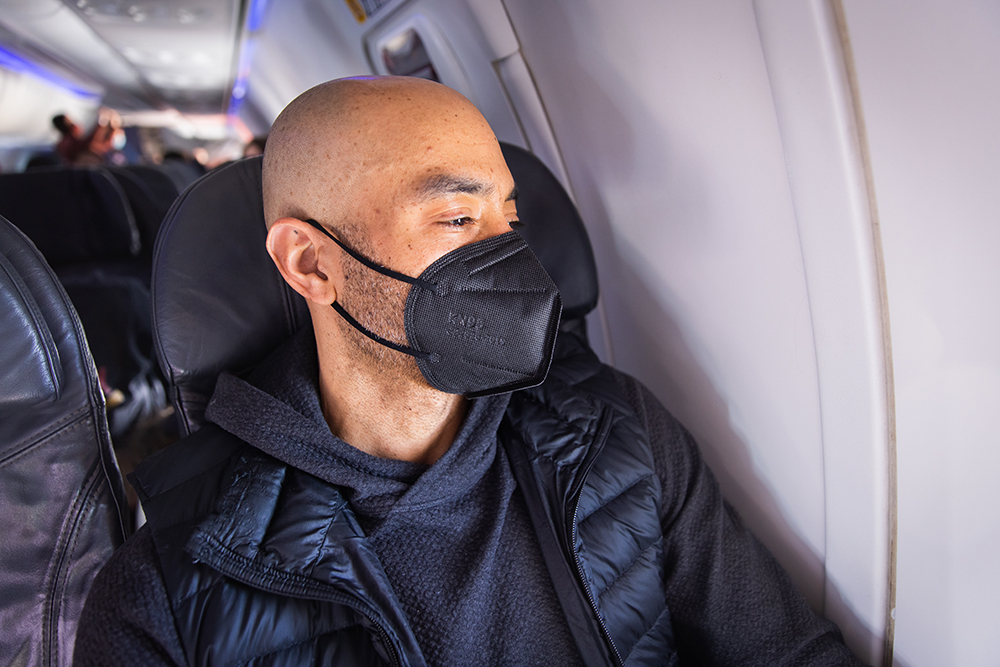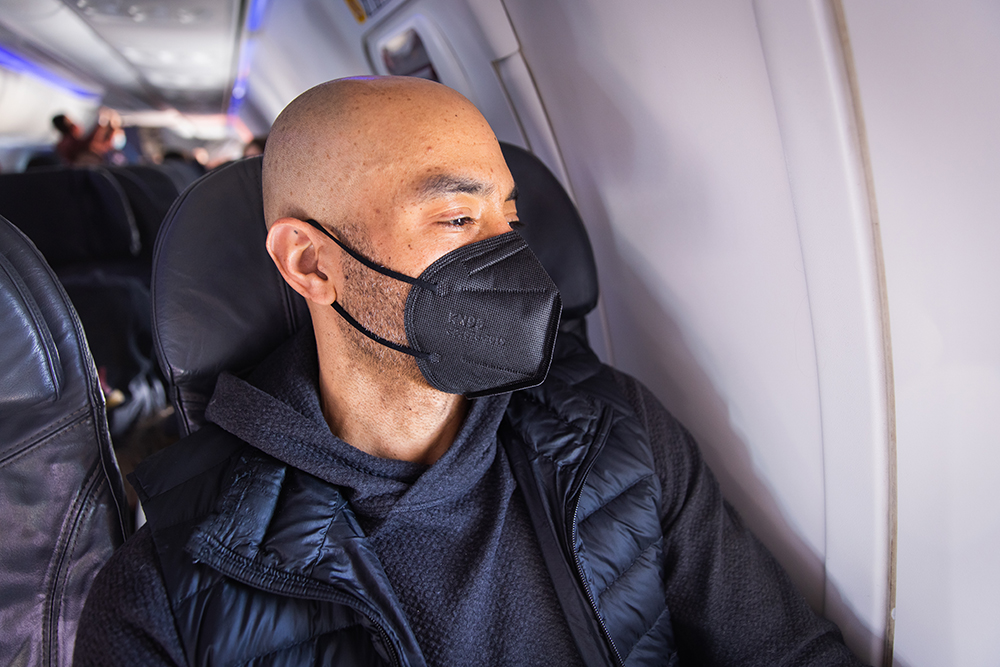Flying on an airplane is safer than ‘grocery shopping or eating out,’ says experts
Share

Travelers wearing a mask have a .003% or NEAR-ZERO CHANCE of being exposed to the virus, even on a full aircraft (according to a Department of Defense study).
Updated April 18, 2022
While doing anything besides staying in your bubble assumes a level of risk, we believe it’s safe to fly—and experts agree.
According to research, airplanes are the safest indoor environments globally, and flying remains relatively low risk. We love to hear it and hope you enjoy flying with us.
Air travel is the safest form of transportation thanks to…
Hospital-grade air filtration
HEPA filters remove 99.9% of airborne particles, including viruses like COVID-19 and other variants.
Clean air exchange
Outside and filtered air in the cabin is exchanged every 2–3 minutes, giving better ventilation than grocery stores and office buildings.
Top-down air flow
Air flows from the ceiling to the bottom of your seat, instead of front to back, minimizing particle movement throughout the cabin and reducing contact other guests.
Wearing Masks
A face mask or covering has been proven to reduce the spread of COVID-19 according studies and the CDC. While masks are no longer required to be on our flights as of April 18, 2022, we respect your decision to keep using this added layer of protection. Above all, we hope you’ll treat each other with kindness and respect throughout the travel journey and beyond.
Getting vaccinated — but not required to travel.
Getting fully vaccinated has proven to be the best way to protect yourself & others from the coronavirus and the many variants which continue to lurk around right now. So, while it is not a requirement to fly, we encourage you to do so.

With over 100 ways to keep you safe, our Next-Level Care meets hospital-grade health safety measures and recommendations from experts, including researchers at Harvard University’s T.H. Chan School of Public Health, who found a “layered approach” lowers the spread of viruses on planes.
“This layered approach, with ventilation gate-to-gate, reduces the risk of SARS-CoV-2 transmission onboard aircraft below that of other routine activities during the pandemic, such as grocery shopping or eating out,” the report says.
Related:
- 10 Qs you might have about traveling again
- Do’s & don’ts when returning to air travel
- More convenience––less contact! Alaska is making travel almost entirely touch-free
Book your next flight with us at alaskaair.com.
